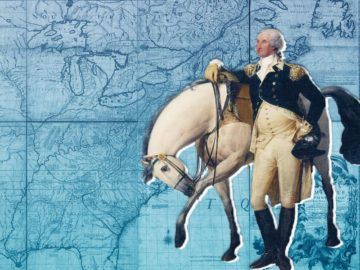David Kindy in Smithsonian:
 In 1789, newly elected president George Washington faced one of the most difficult challenges of his life: creating a unified nation out of a disparate, discordant drove of 13 stubbornly independent former colonies. To do that, Washington decided to take a road trip up and down the new United States. Along the way, the former commander-in-chief of the Continental Army used his prominence and prestige—as well as his peaceful persona and level leadership—to convince new Americans to forget what divided them and focus on what united them.
In 1789, newly elected president George Washington faced one of the most difficult challenges of his life: creating a unified nation out of a disparate, discordant drove of 13 stubbornly independent former colonies. To do that, Washington decided to take a road trip up and down the new United States. Along the way, the former commander-in-chief of the Continental Army used his prominence and prestige—as well as his peaceful persona and level leadership—to convince new Americans to forget what divided them and focus on what united them.
Award-winning author Nathaniel Philbrick revisits this historic journey in his new book, Travels With George: In Search of Washington and His Legacy. Drawing unnerving parallels to the nation’s current political landscape, the writer shows how the lessons taught by the “father of our country” are still relevant today.
“The divisions are remarkably reminiscent of where we are now,” says Philbrick. “It was a book that I thought would be fun to do but didn’t anticipate how deep I would get into it with my research and how it connects with modern events. Even though we were following someone from 230-plus years ago, it seemed like it was happening today.” Part travelogue, part history lesson and part personal reflection, Travels With George reveals how Washington convinced a very skeptical public that America could pull off its experiment in democracy. The key, the president argued, was in the hands of those who elected him: “The basis of our political system is the right of the people to make and to alter their constitutions of government.”
“This was a novel concept,” Philbrick says. “Everywhere else, there is a king or dictator who is leading the country. This is not someone who has inherited the role. This is someone who has been elected by the people. It had never been done before.”
More here.
